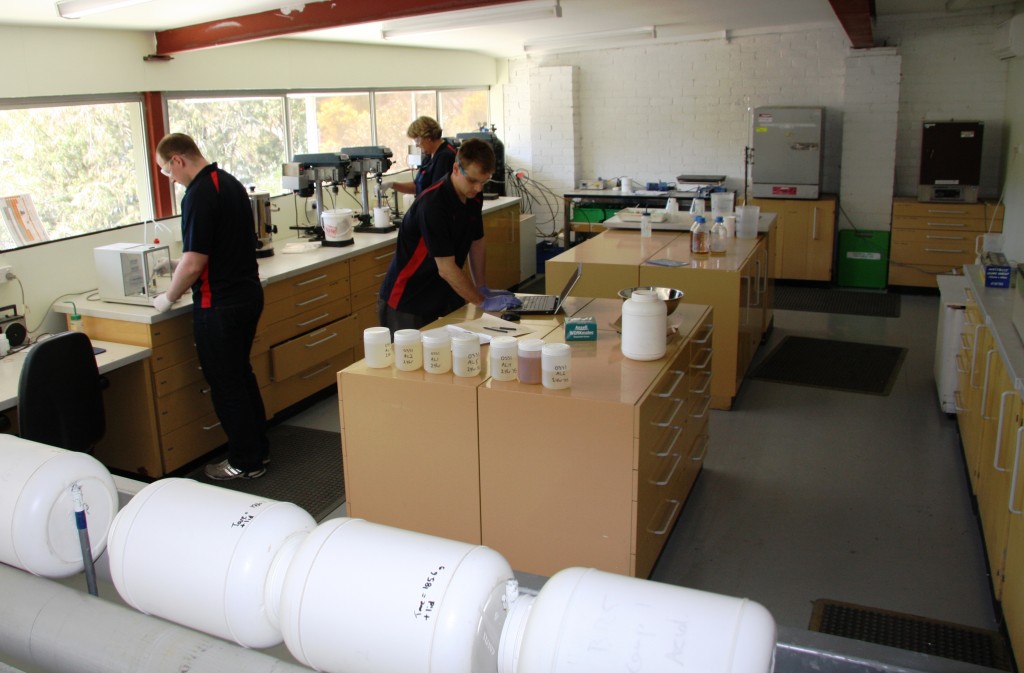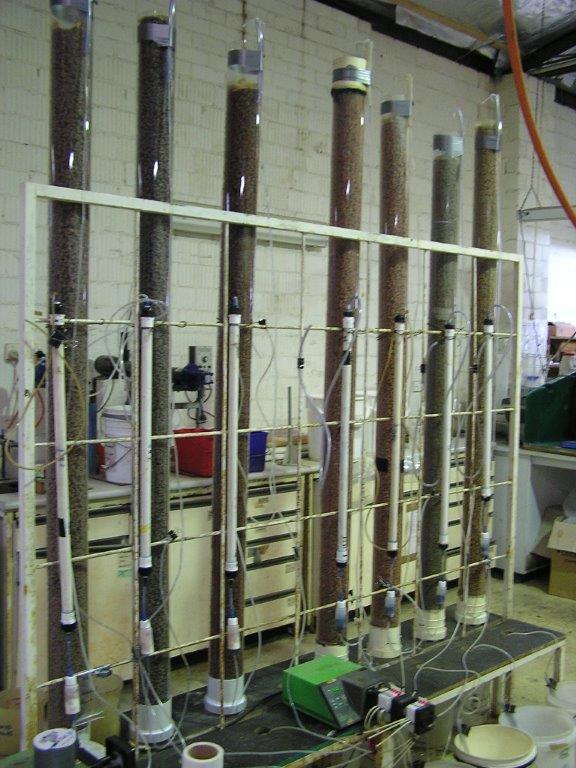AMML has decades of experience and a dedicated laboratory for hydrometallurgical testwork.
Agitation and Bottle Roll Leach Testing
- Stirred reactors and bottle rolls (up to 200 L bottles)
- Cyanidation tests including carbon-in-leach (CIL) and carbon-in-pulp (CIP)
- Acid leaching (eg. copper and cobalt ores)
- Uranium leaching in either acidic or alkaline conditions
- Neutralisation and precipitation tests
- Pressure leaching (autoclave), heated leaching and gas sparging


Column (Heap) Leaching
Simulated heap leach application, typically for gold, silver, copper, nickel and cobalt ores using perspex columns in open or closed circuit. Agglomeration tests can be carried out on ores containing a significant proportion of fine particles prior to leaching. Leach column sizes range from 100-500 mm diameter and up to 5 m tall. A small scale test in a 100 mm × 2 m column nominally requires 20 kg or ore.
Tests usually include size by size assays on the feed ore and leach residues to allow calculation of metal recoveries over the different sizes of crushed rock.
Gold Leaching
- Cyanidation of gold bearing ores
- Diagnostic leaching for gold characterisation
- Carbon activity tests, adsorption kinetics
- Oxygen uptake tests
Cyanide Destruction/Regeneration
Strict environmental regulations require removal of residual cyanide from tailings water. Typically this can be done using several methods. Alternatively, free cyanide can be regenerated from tailings water which can then be recycled for use in the processing plant.